Saffron was a spice regularly used in the kitchen when I was a child. Today, the top shelf of my spice rack holds more than a few different varieties, ready to season my latest dish.
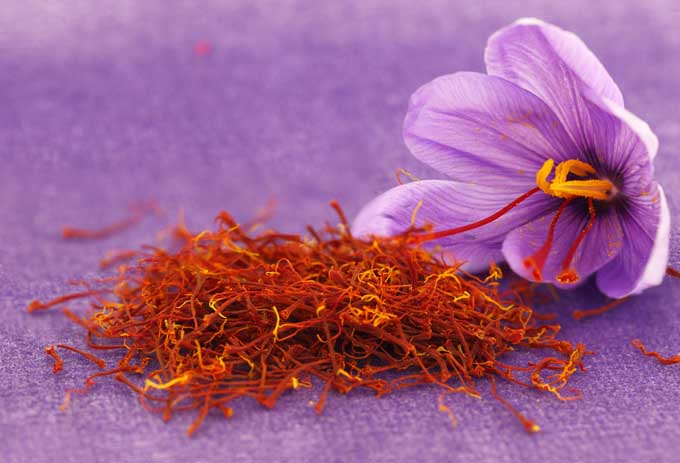
This spice is a particularly expensive commodity due to the sheer volume it takes to produce a large quantity. It is harvested by hand from the stigma of the saffron crocus, which only blooms for a short time during the fall months.
The gorgeous blossoms feature petals ranging in color from vibrant violet to pale lavender which is in stark contrast to the bright red orange hue of the stigmas. Each crocus only yields 3 stigmas and it takes thousands to produce a single ounce of spice.
Recipes often will call for a pinch of saffron, which corresponds to about 14 threads.
The unique color this golden spice brings to your table is remarkable. Dishes infused with this treasure appear to glow. The aroma is unlike any other. The taste is earthy, with sweet woody tones. Too much will turn your meal bitter, so you must take care to use a gentle hand when seasoning.
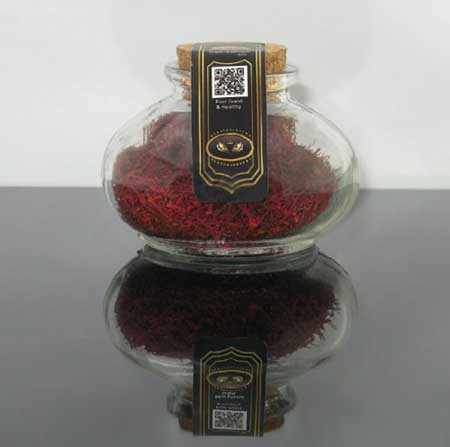
Mehr Red Spanish Saffron is among the best rated on Amazon
Many varieties are found throughout the world, including Spain, Greece, India, Iran, Italy, and Tasmania. Spanish saffron, such as the recommended Mehr brand shown above, is probably the most common variety, and the type you may find in your own spice cabinet and is the traditional choice for paella dishes prepared and served in paella pans.
Foodal recommends Kingdom Quality Afgan (Persian) Saffron available from Amazon
Persian saffron from Iran is probably the next best known variety and is one of the best types for preparing Mediterranean cuisine. However, it is often difficult to find a reliable supplier in the West.
In our investigations, we stumbled on a remarkable substitute from Afghanistan (which shares a western boarder, climate, and soil types with Iran) that we’d whole heartedly recommend. The is the Kingdom Quality brand shipped from Amazon. Yes, their sales page is a little over the top, but the quality is good (5 star reviews).
Keep in mind that there are different types and grades available. Some types are sold with another flower piece, called the style, attached. This practice lessens the price, since it is not considered to be pure, but the quality of the taste should not be affected. You can purchase different varieties online or at your favorite specialty market.
Preparing your saffon for use
Saffron is either available in powdered form, which is ready to use, or threads. If you purchase threads, you will need to prepare them before use. For a recipe that serves 4 to 6 people, you will need anywhere from 14 to 16 threads.
First, using a mortar and pestle, the back of a spoon, or your fingers, crush the threads in a small bowl or cup. Pour hot water over the crushed saffron, and let soak for about 20 minutes, or until the water has cooled. Now, you are ready to add the mixture to your recipe.
The perfect companion to rice dishes, risotto, paella, puddings; this spice makes a culinary statement that you will not soon forget.
Risotto alla Milanese con Luganega
My fondest childhood memories are centered around the times I spent in the kitchen wth my grandmother.
To this day, I can still smell the sweet aroma of saffron along with homemade chicken broth filling our apartment while a pot of chicken simmered on the stovetop.
The taste of creamy risotto infused with saffron was always my first request when returning home on college breaks. Risotto alla Milanese con Luganega holds a special place in my heart. Rice dishes referred to as “Milanese” usually feature saffron.
- 13/4 cups uncooked Arborio rice can substitute any small grain rice or Basmati rice
- 6 cups chicken broth
- 1 teaspoon saffron powder or about 14 threads - see note above on preparing threads
- 1 1/2 cups sliced mushrooms or 1 1/2of dried mushrooms
- 1 pound Luganega sausage removed from casing
- 1 cup olive oil divided
- 4 tablespoons unsalted butter
- Salt and pepper to taste
- 1 cup grated parmesan cheese reserve 4 tablespoons for garnish
- Remove the sausage from its casing and break it into small pieces.
- Heat a large saucepan and add ½ cup of the olive oil, mushrooms, and sausage. Season with salt and pepper to taste and brown in a medium saucepan.
- Remove sausage and mushrooms from the pan and drain the fat.
- Return sausage and mushrooms to the pan with ½ cup of olive oil.
- Add the rice slowly. The rice will start to turn translucent as it soaks up the oil.
- Turn the heat down to medium and add the chicken broth ½ cup at a time. Allow the rice to soak up all of the broth before adding more broth.
- After adding one cup of broth, add the saffron.
- Continue adding broth ½ cup at time.
- When rice appears al dente, remove from heat.
- Incorporate butter and parmesan cheese.
- Serve in individual bowls with the rest of the parmesan cheese on top.
Looking for more herb and spice information? Be sure to check out Foodal’s Ultimate Guide to Kitchen Herbs and Spices.
About Jennifer Swartvagher
Jennifer is an experienced journalist and author. Her work has been featured on TODAY Parents, The New York Times Blog, BlogHer, Scary Mommy, and scores of other parenting and cooking publications.


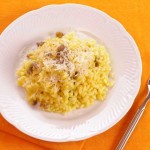
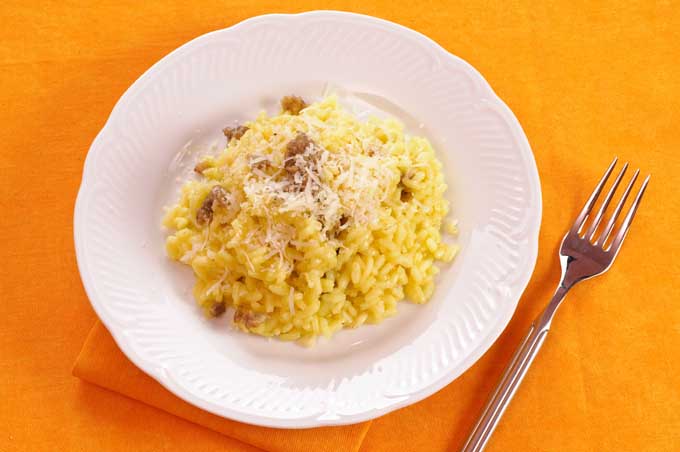
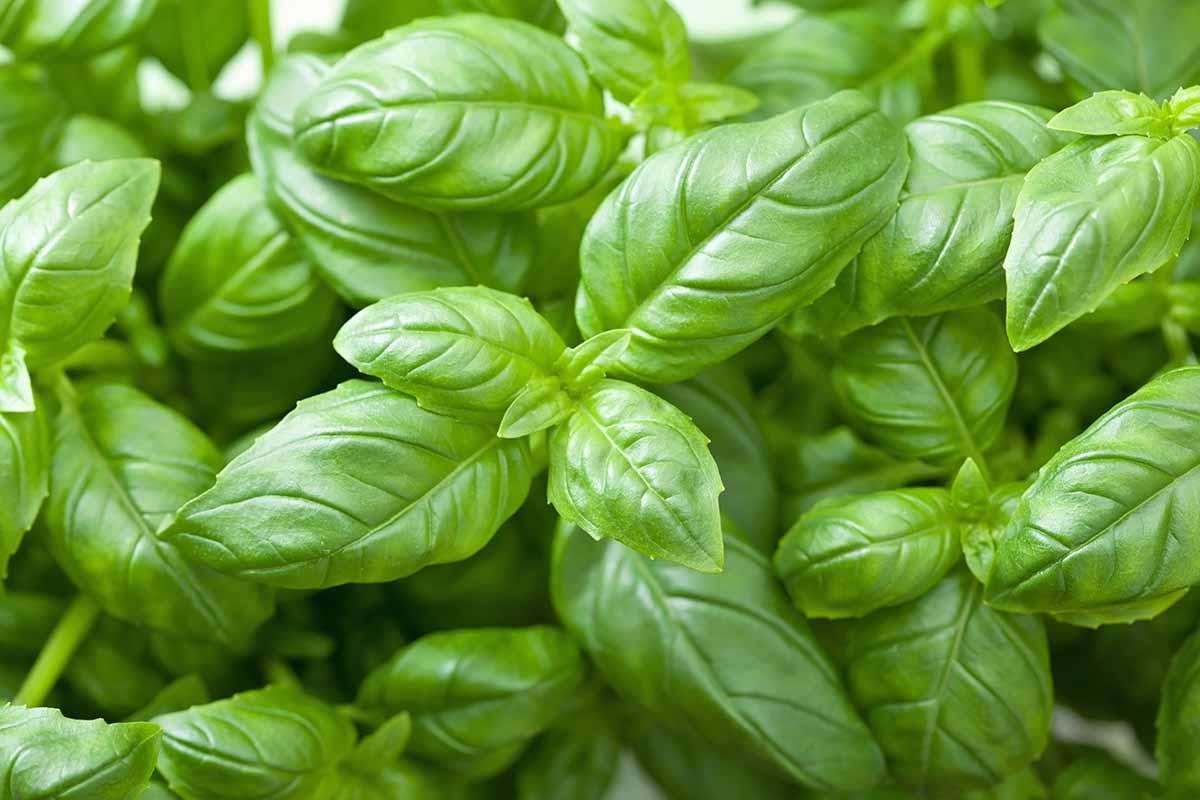
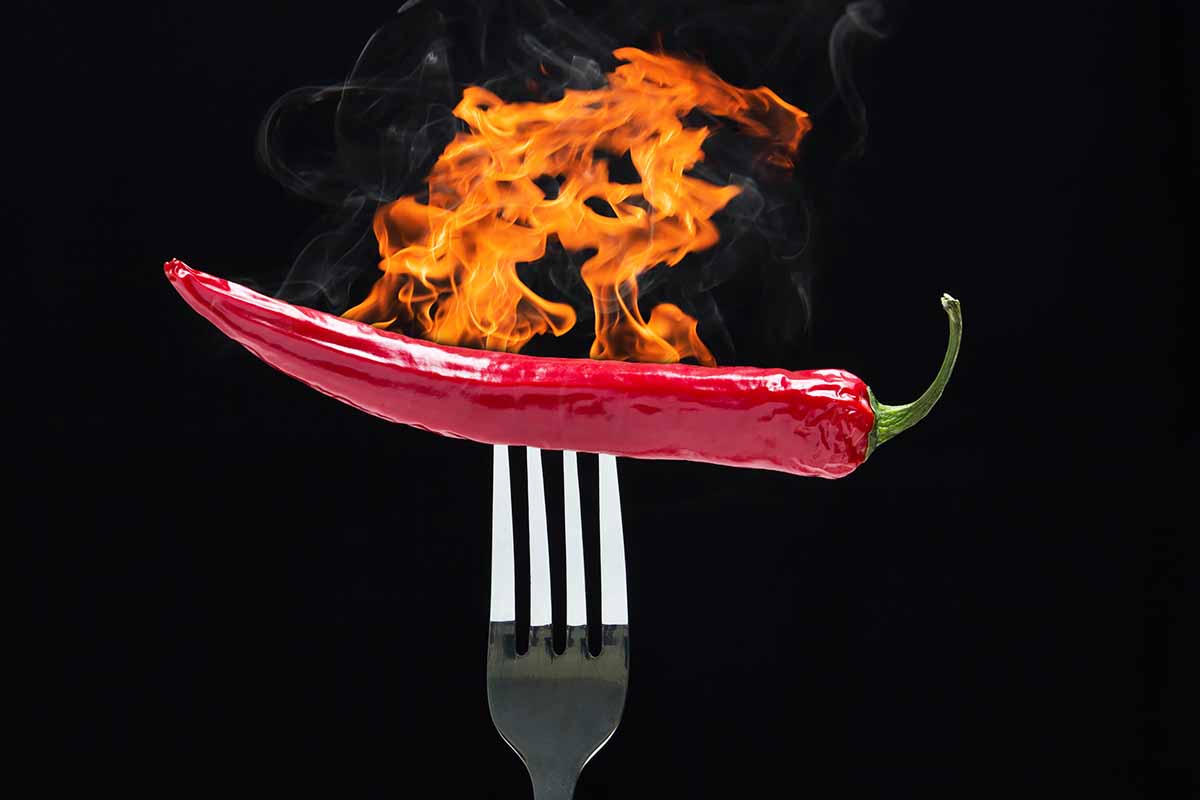
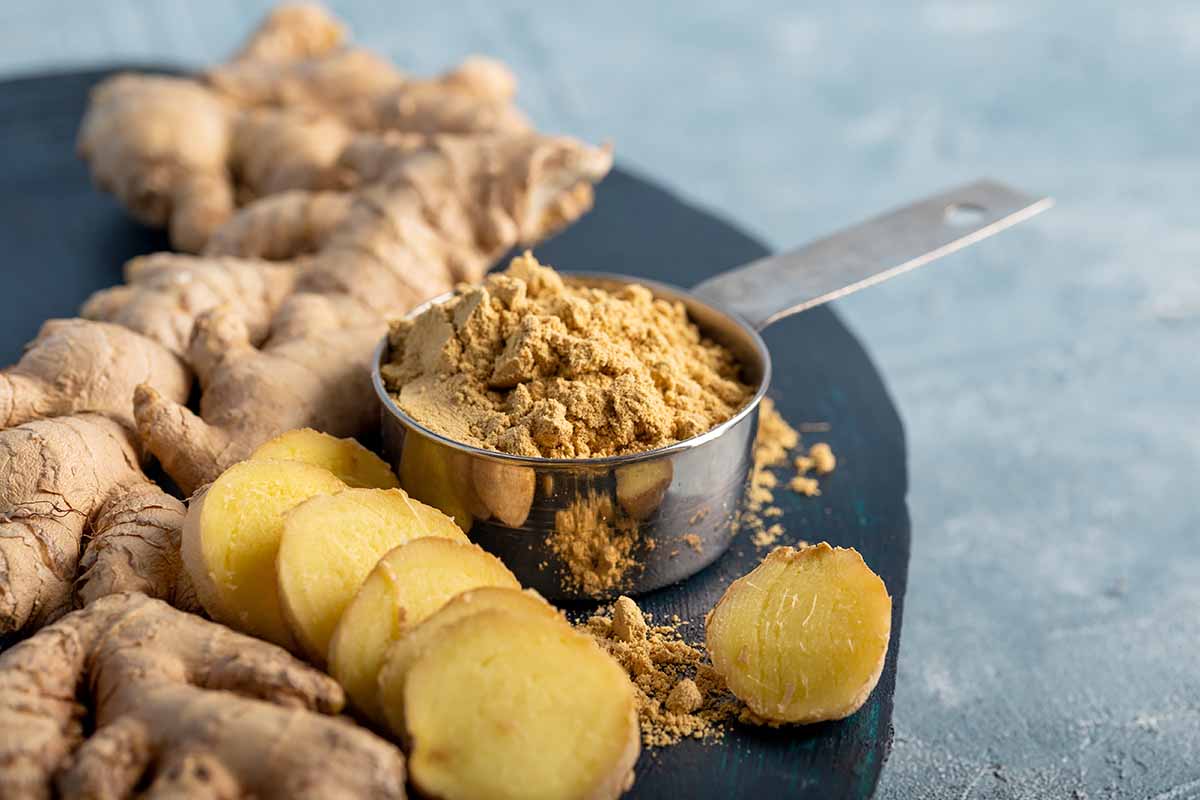
I must admit, I have a whole jar of saffron threads at home but I’ve never had the opportunity to use them. It’s a particularly old jar as well. I don’t if these things eventually go bad, but being that it’s a spice it most probably won’t. I may try this recipe just so I get to use (and taste) saffron.
Saffron is not just the most expensive spices in the world — it’s also one of the most remarkable. The intensely earthy, aromatic and floral aroma of honey is truly one of a kind, and adds an elegant golden hue to any dish.
You’re not kidding when you say it’s a treasure in your spice cabinet. It’s one of the most expensive goods in the world. To be honest, I don’t think it’s worth that much. I’ve had the pleasure of eating a saffron risotto, and while it tasted good, it wasn’t worth the price
I have a question: Does saffron lose its potency quickly? I made a batch of rice with saffron I picked up on clearance at a store & I could barely taste it at all. When I say barely I’m being generous. It seemed like I had not added any. Could there be an explanation other than it being old? There was no date on the packaging but I cannot imagine why else it would be on clearance.
Apparently powdered saffron lasts for about 3 years or so but the flavor diminishes so you need to use a little more in your dishes. The threads, on the other hand can last up to 10 years if they are stored in an airtight container away from heat and light.
Yes, it does lose it’s potency over time. Just be sure to store it in an airtight container.
Saffron is a lovely tasting herb, but it is so expensive! Even for a pinch of it it can cost around £-6-8 in most supermarkets, which to me is a little too much. Other than its price, it is a great addition to your herb cupboard and can be used in both food and drink.
I have heard about saffron before but never took keen interest and wasn’t that knowledgeable about it as i am right now. Something to keep in mind, next time am at the grocer’s store am definitely buying it…i know dinner will be worthwhile afterwards 🙂
This is very interesting information – although I’m aware how expensive saffron is, I had no idea about the work involved in producing it. I heard someone say recently that saffron was more expensive that gold at the time! That’s definitely food for thought.
I tend to use saffron in paella and risotto alla Milanese, and I serve it with Osso Buco; I also use it in Kheer, an Indian milk rice pudding that contains cardamom, fruits and nuts.
In some dishes you can substitute the saffron for a little turmeric, but use sparingly as you don’t want to alter the flavour too much. It does help give you the colour you want though.
I’ve rarely come across recipes calling for saffron, so I was unaware of how expensive it was, until I priced a jar of threads at the store. Based on shelf life, it sounds as if the threads might be a better buy than ground saffron, and your recipe might just tempt me to purchase them.
Saffron has its uses, but the novice cook might avoid trying any recipes with saffron in it. It’s difficult to use right, and an expensive mistake if you don’t.
That said, there are times when quality counts and you should pull out the stops, but I would still recommend waiting until you’ve got a firm hand on the skillet before you go spooning it out. A little goes a long way. You’d use the tiniest pinch in a soup with about four servings, and that should give you an idea just how flavorful but expensive it is.
I have an entire new appreciation for saffron. Before I read this blog I just knew it as a cute word in a great song. I’m going to have to look into this, try a recipe or two and see what the family thinks.
It’s really nice but it’s certainly expensive. If you do decide to get some, try a smaller ethnic food shorp as they often sell smaller amounts for a lower price.
Saffron is really worth its price in gold! Just one pinch of this wonderful spice will color your whole meal and make it a hundred times more aromatic. It very expensive, but well worth it, in my opinion.
You learn something new every day. I’ve had dishes with saffron in it but I didn’t know all of that about it. I’m always looking for add-ins for broth.
This recipe here looks really good. I haven’t ever heard of this or tried it. Not too big on eating sausage. Maybe some beans or cashews on this. I guess you could do chicken chunks. It’s funny cause it’s rice, but I keep thinking it is pasta. Maybe because of the name of it.
I’ve loved risotto with Saffron the few times I have had it, and you are definitely correct when you say it adds a note to your dishes you won’t forget.
I always like to buy one spice per trip to the grocery store, so I do not blow my grocery budget just on spices (easy to do).
Spices are so fun to play with in dishes though! I always receive many compliments on my ability to properly mix spices, herbs, etc. when cooking. I am also quite good at making the best dishes at Mongolian grills.
I have to admit that I’ve never used saffron in my cooking before, it’s just an ingredient outside of my price range. I never knew there were so many different varieties of saffron though, I always assumed it was a simple Mediterranean spice. Thanks for sharing!
Dang, I’m learning something NEW again! A friend once brought some home from a trip to a Middle Eastern country a long time ago. However, I never really thought much of it because well – I had no idea what saffron is! I’m only reminded now when I saw the picture here. I actually enjoyed reading the whole article, and it made me imagine how special this spice is – especially with its hefty price. Anyway, I don’t think I’ll get my hands on this spic. At least, I haven’t seen it in our supermarkets here.
Wow, never knew why saffron was so expensive. Thanks for sharing this info, I think when you share info like this people have a much greater appreciation for the people who grow their food.
I always get saffron and sassaflower mixed up and I have no idea why. Maybe because they both start with s. I don’t think I’ll even get my hand on any simply because the price is so prohibitive, if I do though I’ll be sure to only add it to the most extravagant recipes I can find. I won’t be adding it to my baked fish, or potatoes fries anytime soon. I guess a little goes a long way with these since preparation calls for adding it to hot water. Is this to extract the flavor or for something else?
Oh thank you for this! I have always been so intrigued by saffron, but a little afraid to use it. That price tag can be hefty, but the flavor is so distinct, and it is just so pretty. I’ve just always been nervous about using too much, or the wrong kind, or pairing with the wrong flavors and foods. I’m going to give it a go now!
great piece of information